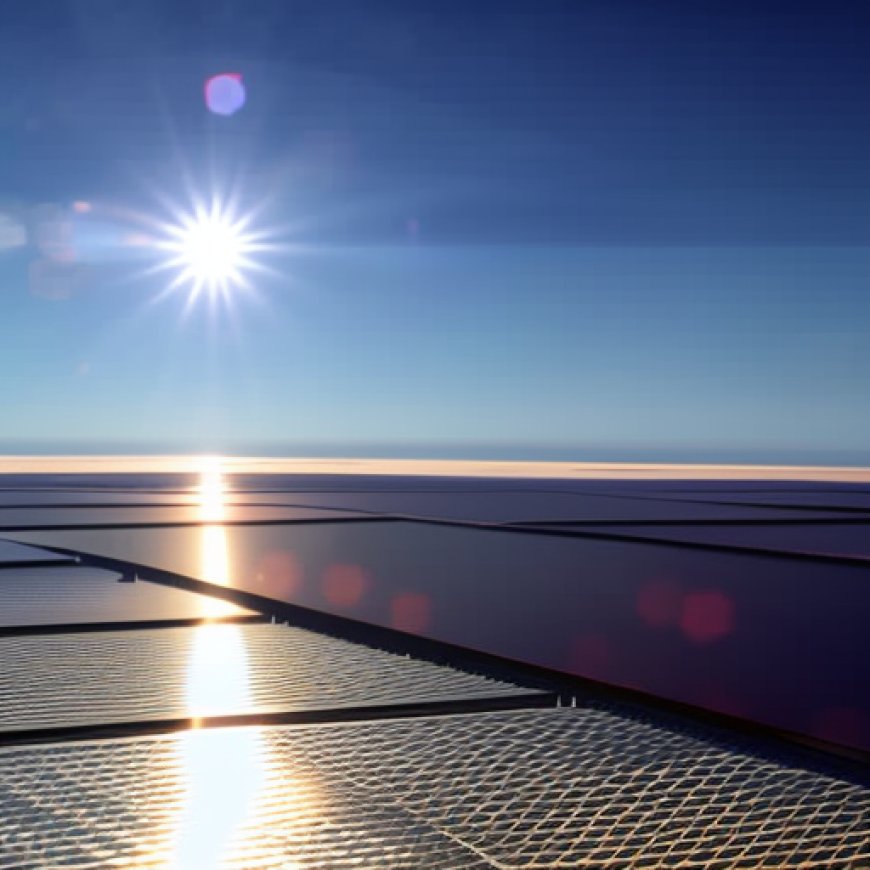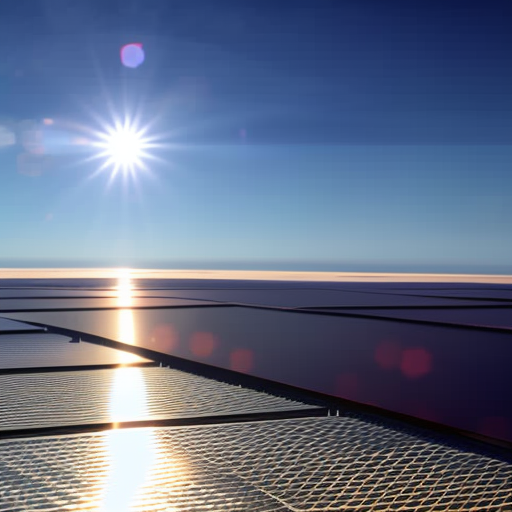The Role of High-Efficiency Concentrated Solar Power in Climate Change Mitigation
The Role of High-Efficiency Concentrated Solar Power in Climate ... EnergyPortal.eu


The Future of High-Efficiency Concentrated Solar Power in Combating Climate Change
The threat of climate change has become an urgent global concern, prompting the need for innovative solutions to reduce greenhouse gas emissions and transition to a more sustainable energy future. One promising technology that has gained significant attention in recent years is high-efficiency concentrated solar power (CSP). This advanced form of renewable energy harnesses the sun’s rays to generate electricity, offering a viable alternative to fossil fuels and a critical tool in the fight against climate change.
High-Efficiency CSP Systems
High-efficiency CSP systems use mirrors or lenses to concentrate sunlight onto a small area, typically a solar receiver or thermal collector. This concentrated energy is then converted into heat, which can be used to produce steam and drive a turbine, generating electricity. The key advantage of CSP over traditional solar photovoltaic (PV) technology is its ability to store energy in the form of heat, allowing for electricity generation even when the sun is not shining. This makes CSP a more reliable and dispatchable source of renewable energy, capable of meeting fluctuating energy demands and reducing reliance on fossil fuels.
Advancements in CSP Technology
Recent advancements in CSP technology have led to significant improvements in efficiency and cost-effectiveness. For instance, researchers have developed novel materials for solar receivers that can withstand higher temperatures, resulting in increased energy conversion efficiency. Additionally, innovative thermal energy storage systems have been designed to store heat for longer periods, enabling CSP plants to operate around the clock and provide a continuous supply of electricity. These advancements have made CSP increasingly competitive with conventional power generation methods, such as coal and natural gas, in terms of both cost and performance.
Sustainable Development Goals
The potential of high-efficiency CSP to mitigate climate change is immense. According to the International Energy Agency (IEA), CSP could account for up to 11% of global electricity generation by 2050, reducing CO2 emissions by more than 2.1 gigatons per year. This would represent a significant contribution to the global effort to limit temperature rise to well below 2°C above pre-industrial levels, as outlined in the Paris Agreement.
Moreover, CSP offers numerous co-benefits that can support sustainable development and improve quality of life. For example, CSP plants can be integrated with desalination facilities to produce fresh water, addressing water scarcity issues in arid regions. Additionally, the deployment of CSP can create new employment opportunities in manufacturing, construction, and operation, fostering economic growth and social development.
Challenges and Solutions
Despite its potential, the widespread adoption of high-efficiency CSP faces several challenges. High upfront capital costs and the need for large-scale installations have limited the deployment of CSP, particularly in developing countries with limited financial resources. Furthermore, the technology requires direct sunlight and vast land areas, which may not be available in densely populated or cloudy regions.
To overcome these barriers and unlock the full potential of high-efficiency CSP in combating climate change, concerted efforts are needed from governments, industry, and research institutions. Policy support, such as feed-in tariffs and tax incentives, can help stimulate investment in CSP projects and drive down costs through economies of scale. Moreover, international collaboration and knowledge sharing can accelerate technological advancements and facilitate the transfer of CSP technology to developing countries.
Conclusion
In conclusion, high-efficiency concentrated solar power holds great promise as a key player in the global effort to mitigate climate change. With continued innovation and supportive policies, CSP can become a major contributor to a sustainable energy future, reducing greenhouse gas emissions and fostering socio-economic development. As the world grapples with the urgent need to transition to a low-carbon economy, the role of CSP in the energy mix is poised to become increasingly significant.
SDGs Addressed or Connected to the Issues Highlighted in the Article
- SDG 7: Affordable and Clean Energy
- SDG 9: Industry, Innovation, and Infrastructure
- SDG 13: Climate Action
- SDG 15: Life on Land
The article discusses the need for innovative solutions to combat climate change and transition to a more sustainable energy future. This aligns with SDG 7, which aims to ensure access to affordable, reliable, sustainable, and modern energy for all. The use of high-efficiency concentrated solar power (CSP) as a renewable energy source addresses this goal.
The advancements in CSP technology mentioned in the article also relate to SDG 9, which focuses on promoting inclusive and sustainable industrialization and fostering innovation. The development of novel materials and thermal energy storage systems demonstrates innovation in the renewable energy sector.
Furthermore, the article emphasizes the role of CSP in combating climate change, aligning with SDG 13. CSP’s ability to reduce greenhouse gas emissions and contribute to the global effort to limit temperature rise supports this goal.
Lastly, the co-benefits of CSP mentioned in the article, such as addressing water scarcity and creating employment opportunities, connect to SDG 15, which aims to protect, restore, and promote sustainable use of terrestrial ecosystems.
Specific Targets Under Those SDGs Identified Based on the Article’s Content
- SDG 7.2: Increase substantially the share of renewable energy in the global energy mix
- SDG 9.4: Upgrade infrastructure and retrofit industries to make them sustainable, with increased resource-use efficiency and greater adoption of clean and environmentally sound technologies and industrial processes
- SDG 13.2: Integrate climate change measures into national policies, strategies, and planning
- SDG 15.2: Promote the implementation of sustainable management of all types of forests, halt deforestation, restore degraded forests, and substantially increase afforestation and reforestation globally
The article highlights the potential of CSP to increase the share of renewable energy in the global energy mix, supporting SDG 7.2.
The advancements in CSP technology mentioned in the article contribute to SDG 9.4, as they involve upgrading infrastructure and adopting clean and environmentally sound technologies.
The integration of CSP into national policies and strategies to combat climate change aligns with SDG 13.2.
The co-benefit of CSP in promoting sustainable land use, particularly in arid regions, connects to SDG 15.2.
Indicators Mentioned or Implied in the Article That Can Be Used to Measure Progress Towards the Identified Targets
- Percentage of global electricity generation from concentrated solar power (CSP)
- Number of CSP installations and their capacity
- Reduction in CO2 emissions attributed to CSP
- Number of desalination facilities integrated with CSP plants
- Employment opportunities created by the deployment of CSP
The percentage of global electricity generation from CSP can serve as an indicator to measure progress towards SDG 7.2.
The number of CSP installations and their capacity can be used to track progress towards SDG 9.4.
The reduction in CO2 emissions attributed to CSP can be an indicator to measure progress towards SDG 13.2.
The number of desalination facilities integrated with CSP plants can indicate progress towards SDG 15.2.
The employment opportunities created by the deployment of CSP can also serve as an indicator for SDG 15.2.
Table: SDGs, Targets, and Indicators
| SDGs | Targets | Indicators |
|---|---|---|
| SDG 7: Affordable and Clean Energy | Increase substantially the share of renewable energy in the global energy mix (Target 7.2) | Percentage of global electricity generation from concentrated solar power (CSP) |
| SDG 9: Industry, Innovation, and Infrastructure | Upgrade infrastructure and retrofit industries to make them sustainable, with increased resource-use efficiency and greater adoption of clean and environmentally sound technologies and industrial processes (Target 9.4) | Number of CSP installations and their capacity |
| SDG 13: Climate Action | Integrate climate change measures into national policies, strategies, and planning (Target 13.2) | Reduction in CO2 emissions attributed to CSP |
| SDG 15: Life on Land | Promote the implementation of sustainable management of all types of forests, halt deforestation, restore degraded forests, and substantially increase afforestation and reforestation globally (Target 15.2) | Number of desalination facilities integrated with CSP plants |
| SDG 15: Life on Land | Promote the implementation of sustainable management of all types of forests, halt deforestation, restore degraded forests, and substantially increase afforestation and reforestation globally (Target 15.2) | Employment opportunities created by the deployment of CSP |
Behold! This splendid article springs forth from the wellspring of knowledge, shaped by a wondrous proprietary AI technology that delved into a vast ocean of data, illuminating the path towards the Sustainable Development Goals. Remember that all rights are reserved by SDG Investors LLC, empowering us to champion progress together.
Source: energyportal.eu

Join us, as fellow seekers of change, on a transformative journey at https://sdgtalks.ai/welcome, where you can become a member and actively contribute to shaping a brighter future.







